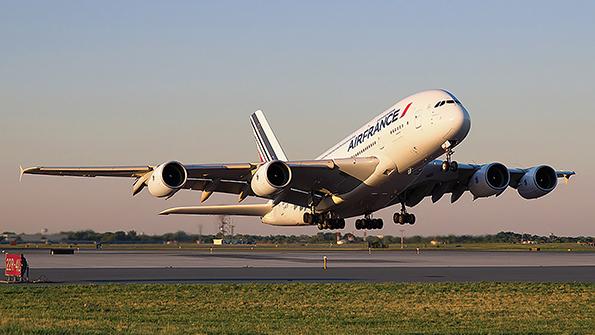
When the COVID-19 pandemic hit, Air France was early into a radical fleet shake-up plan set out by Air France-KLM CEO Ben Smith in November—part of his long-term drive to improve performance and narrow the profitability gap with its peers.
Initial plans called for its A380s to leave the fleet by the end of 2022 and targeted A340s for retirement in the short-term, too. Air France ordered more A350s to replace the A380s and placed a large order in July for A220s—60 firm plus 30 options and 30 acquisition rights—to replace A318s and A319s and modernize its short-haul network.
The pandemic-induced demand shock has accelerated some of the plan’s key elements.
“To date, we are operating 163 aircraft out of the 212 that make up the Air France fleet,” says Nicolas Bertrand, Air France fleet director. “The aircraft that are not operating include the A340s and A380s, which will not return to commercial service.”
In May, Air France said it was bringing the exit of its A380s forward, having already made the decision back in December 2019 to add a further 10 aircraft to its existing order of A350s to replace them.
Air France is currently offering 50% of its normal flight schedule, and the airline is regularly adjusting its offer based on demand and the evolution of travel restrictions.
For the 2020 winter season, Air France is deploying its A350s from Paris Charles de Gaulle Airport to Abidjan, Ivory Coast; Bamako, Mali; Mumbai, India; New Delhi, Sao Paulo and Toronto.
“Air France has ordered 38 Airbus A350-900s, of which the first was delivered in September 2019,” Bertrand says. “At this stage, six aircraft have been delivered and the next delivery is due in February 2021. Seven are due to be delivered in total in 2021.”
Destinations such as Johannesburg, previously served only by A380s, or those such as New York’s John F. Kennedy International Airport, which were partially A380-operated routes, are now being serviced by other types within the fleet, depending on demand levels and the particularities of each route, Air France says.
Asked if the COVID-19 crisis is prompting Air France to use its A350s or other newer aircraft on different destinations instead of those it had planned prepandemic, the carrier did not give specific details. “We are prioritizing the use of latest-generation aircraft to operate our flights, following a regularly updated program which is dependent on the demand and particularities of each route,” Air France says.
As demand within both France and Europe lags, the outgoing A318s and A319s may offer short-term opportunities for capacity downsizing in lieu of the carrier’s A321s.
“Air France is adjusting its offering very regularly—up or down—according to demand and is adapting the aircraft used to the needs identified on each route,” the carrier says.
The A220s, scheduled to begin arriving in September 2021, will bring similar flexibility and more favorable economics.
“The delivery calendar sets out a sustained pace, with six aircraft expected by the end of 2021, and it has not been modified,” Bertrand says. “Renewing the fleet is in fact Air France’s main tool for reducing its carbon footprint, one of the group’s priorities. These aircraft also have lower operating costs and will allow Air France to bring down the average age of its fleet.”





